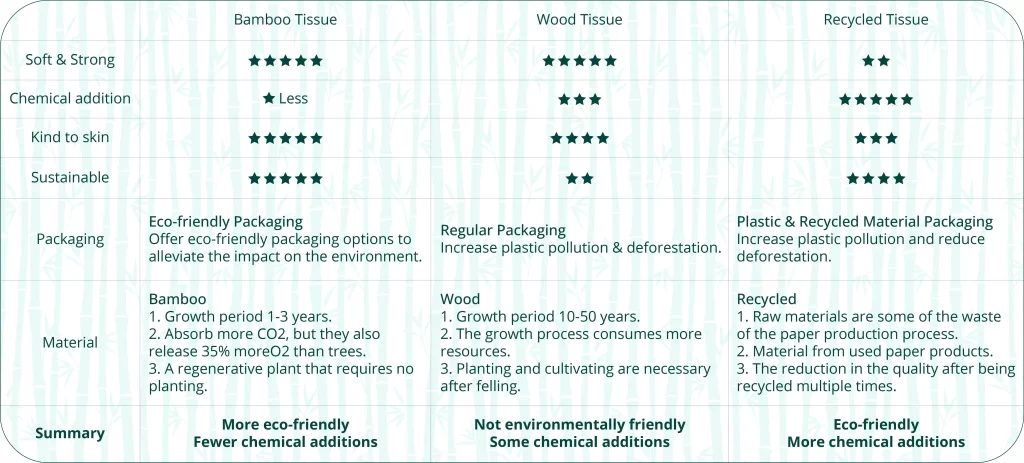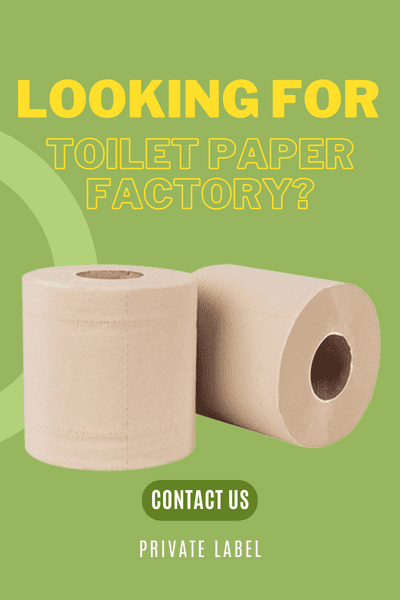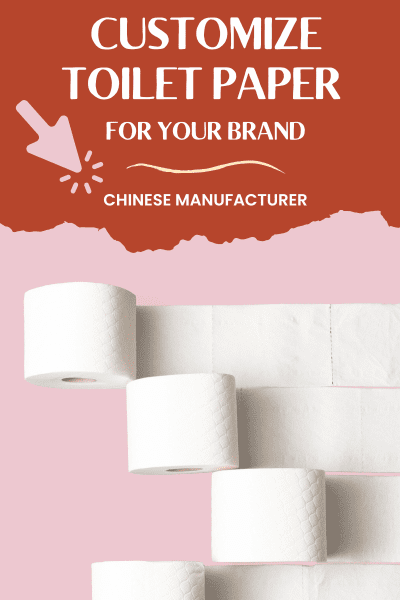What’s the difference between bamboo toilet paper and traditional wood pulp toilet paper?
Bamboo toilet paper is made from fast-growing grass, while wood pulp toilet paper uses slow-growing trees. Bamboo options are more renewable and biodegradable, though traditional pulp remains widely used due to its availability and cost.

1. Raw Material Source
竹子 is technically a grass, not a tree. It can grow up to 1 meter per day and regenerate naturally without replanting. This makes it one of the most renewable raw materials available for paper production.
Traditional wood pulp comes from hardwood or softwood trees, which often take 10 to 30 years to mature. Logging these trees contributes to deforestation and biodiversity loss, especially when old-growth forests are involved.
2. Manufacturing Process
Bamboo pulp is usually processed using mechanical or chemical methods with fewer harsh chemicals. Since bamboo contains less lignin than wood, it requires less energy and chemical input during pulping and bleaching.
Wood pulp, especially virgin pulp, may require intensive bleaching and more energy to break down the lignin structure. Chlorine-based bleaching agents are still used in some conventional toilet paper manufacturing, which raises environmental concerns.
3. Environmental Impact
Bamboo cultivation requires no pesticides, grows on degraded land, and uses significantly less water than traditional tree farming. It also absorbs more carbon dioxide and produces more oxygen than equivalent tree cover.
Traditional wood pulp is still widely used due to its historical infrastructure and cost efficiency, but its environmental footprint includes habitat destruction, soil erosion, and higher water usage.
Life Cycle Assessments (LCAs) show bamboo has a lower overall impact, though transportation emissions from exporting bamboo products should also be considered.
4. Performance Comparison
Bamboo toilet paper is generally softer than recycled paper and comparable to high-quality virgin pulp paper. It is naturally hypoallergenic and safe for sensitive skin, often unbleached and fragrance-free.
Wood pulp toilet paper is widely available and known for its consistency in softness and strength. However, depending on the brand, some products may include added chemicals or dyes.
In terms of dissolvability and septic safety, both bamboo and traditional wood pulp products perform well when uncoated and free from additives.
常见问题
-
Is bamboo toilet paper better than wood pulp toilet paper?
Bamboo is more renewable and environmentally friendly, but both can perform well depending on manufacturing practices.
-
Is bamboo toilet paper septic-safe?
Yes, most bamboo toilet paper dissolves quickly and is safe for septic systems.
-
Why is bamboo toilet paper more expensive?
Due to limited production infrastructure and transportation costs, bamboo products often carry a price premium.
-
竹卫生纸可以生物降解吗?
Yes, bamboo toilet paper is fully biodegradable and compostable.
-
Does bamboo toilet paper contain chemicals?
High-quality bamboo tissue is often made without chlorine bleach, dyes, or fragrances.
-
What is wood pulp toilet paper made of?
It is typically made from a mix of hardwood and softwood trees processed into pulp.
-
竹纤维卫生纸柔软吗?
Yes, it is naturally soft and suitable for sensitive skin.
-
Is wood pulp toilet paper environmentally friendly?
Virgin wood pulp has a higher environmental impact, especially when sourced from non-sustainable forests.



